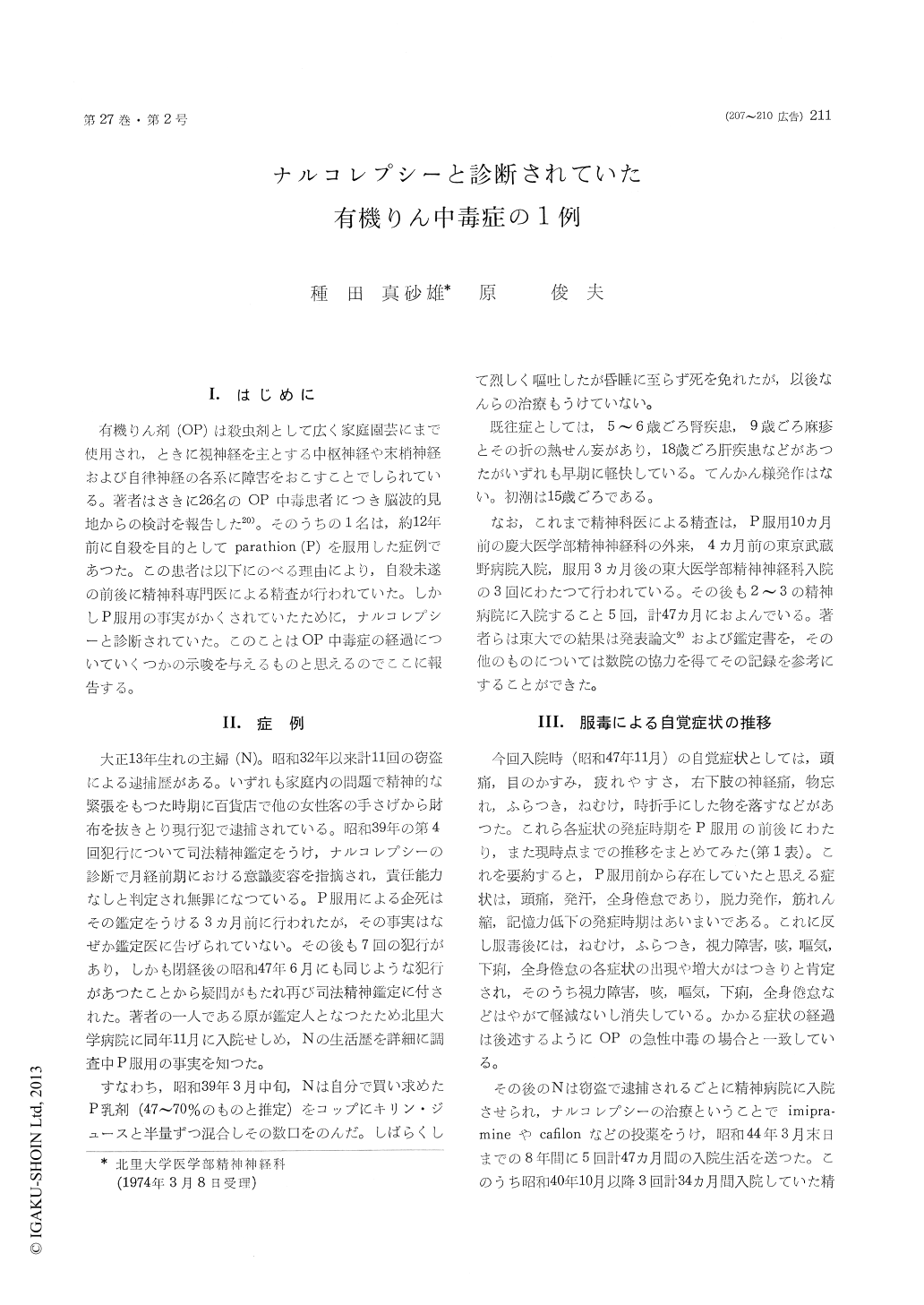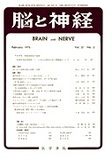Japanese
English
- 有料閲覧
- Abstract 文献概要
- 1ページ目 Look Inside
I.はじめに
有機りん剤(OP)は殺虫剤として広く家庭園芸にまで使用され,ときに視神経を主とする中枢神経や末梢神経および自律神経の各系に障害をおこすことでしられている。著者はさきに26名のOP中毒患者につき脳波的見地からの検討を報告した20)。そのうちの1名は,約12年前に自殺を目的としてparathion (P)を服用した症例であつた。この患者は以下にのべる理由により,自殺未遂の前後に精神科専門医による精査が行われていた。しかしP服用の事実がかくされていたために,ナルコレプシーと診断されていた。このことはOP中毒症の経過についていくつかの示唆を与えるものと思えるのでここに報告する。
A case of organophosphorous poisoning who took parathion for suicidal attempt twelve yeares ago is presented here. The patient, a woman of 47 years old, was examined by a psychiatist in connection with the court commitment for reason of krepto-manial behavior. She was diagnosed as the nar-colepsy because of her complaints of "drowsiness", "attack of weakness on upper/or lower limbs and some autnomic symptoms". At that time, she did not informed to the doctor the fact that she took the insecticides. Since she was prescribed anti-narcoleptic drugs by several doctors, however, neither the symptoms nor the kreptomania were improved.
The authes had an occasion of examinations of her psychiatric and physical conditions, O.07 ppm of parathion and 2.02 ppm of DDVP were revealed in her blood by gas chromatography. Her detailed history taken carefully by the authors and precise observations in the ward taught that her complaints were different from typical symptoms of narcole-psy. Moreover, analysis of all night EEG records were similar to that of organophosphrous poisoning cases ; shortening of latency for the first REM sleep and disorganization of REM and NREM sleep in the early morning sleep period.
One of the authors (Taneda) reported in previous paper about EEG findings of organophosphorous poisoning, and suggested that there are two types of drowsiness as the sequelae of this poisoning.1) Nearly narcoleptic type : Falling into REM sleep directly from stage 1 or 2 of sleep, Clinical symp-toms are hardly improved. 2) Excessive drowsiness type:Less serious that type 1. Remissions and relapses of the symptoms can be observed for severals years.
The patient reported here belongs to type 2.

Copyright © 1975, Igaku-Shoin Ltd. All rights reserved.


